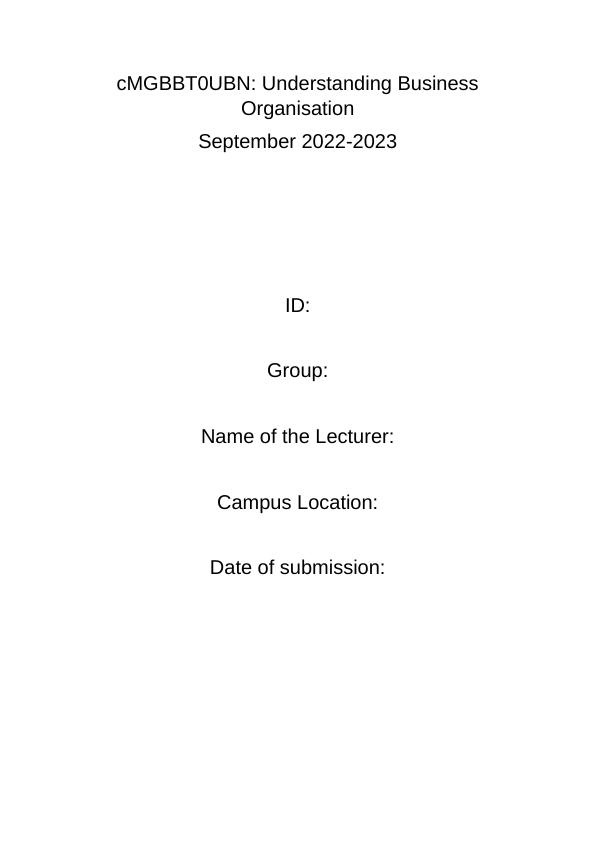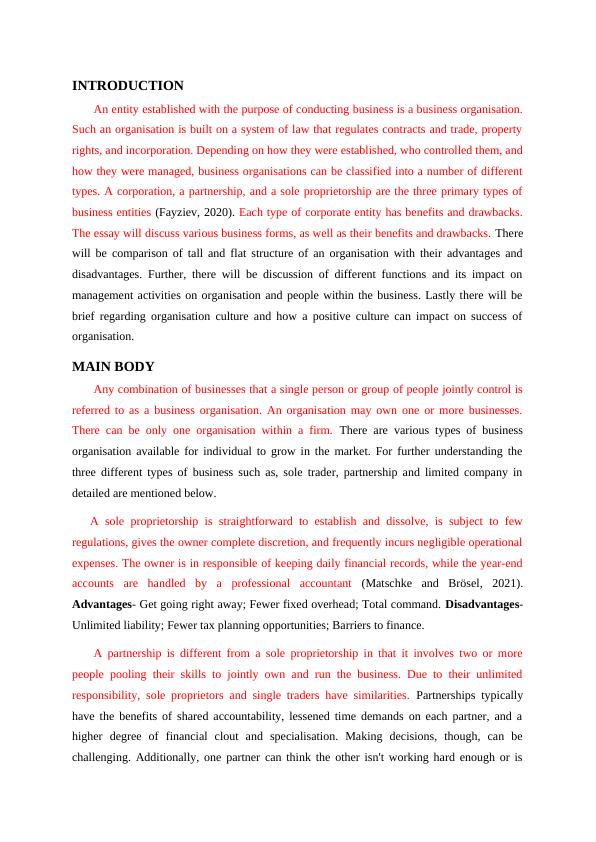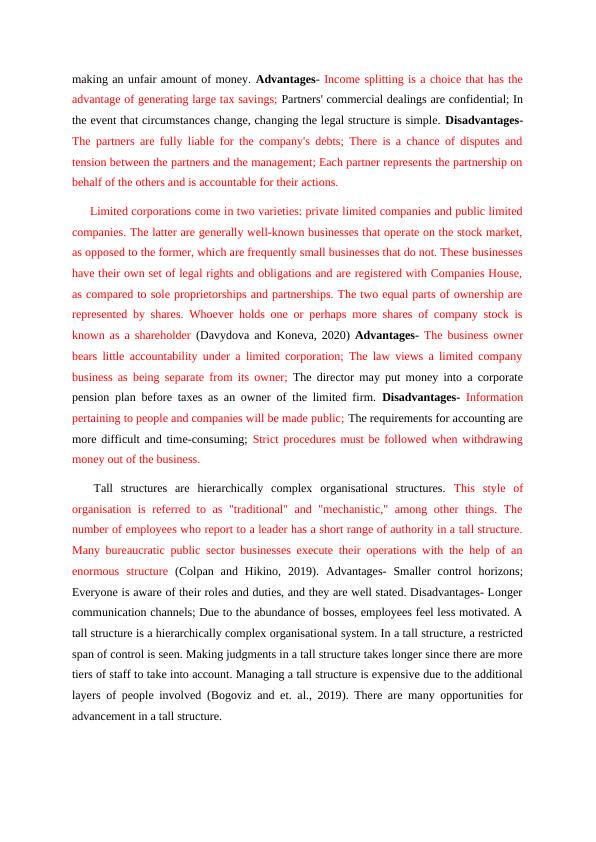Business Types and Functions: Understanding Business Organisation
Prepare an individual written essay on understanding business organisations, discussing different types of business organisations and their functions.
7 Pages2150 Words315 Views
Added on 2023-06-05
About This Document
This essay discusses various business forms, their benefits and drawbacks, comparison of tall and flat structure of an organisation, different functions and their impact on management activities, and organisation culture and its impact on success of organisation.
Business Types and Functions: Understanding Business Organisation
Prepare an individual written essay on understanding business organisations, discussing different types of business organisations and their functions.
Added on 2023-06-05
ShareRelated Documents
End of preview
Want to access all the pages? Upload your documents or become a member.
Understanding Business Organizations
|8
|1973
|183
Understanding Business Organisations - Essay
|9
|2217
|162
Assignment On Developing And Implementing A Complete Accounting System
|6
|1408
|17
Understanding Business Organizations - Types, Functions, and Impact of Management Activities
|7
|1954
|215
Understanding Business Organisations
|7
|1864
|97
Understanding Business Organisations
|10
|2383
|447



